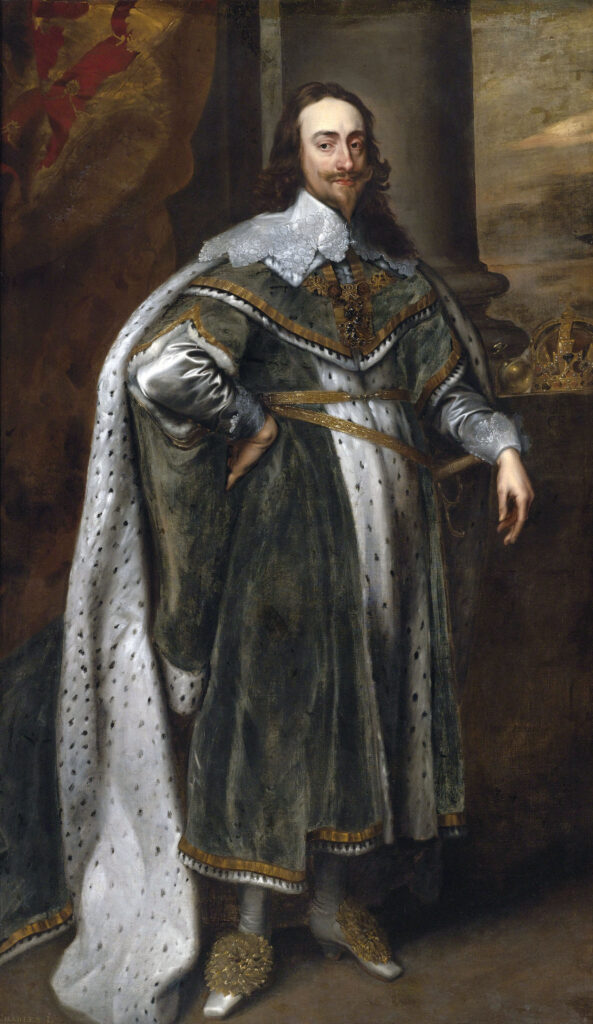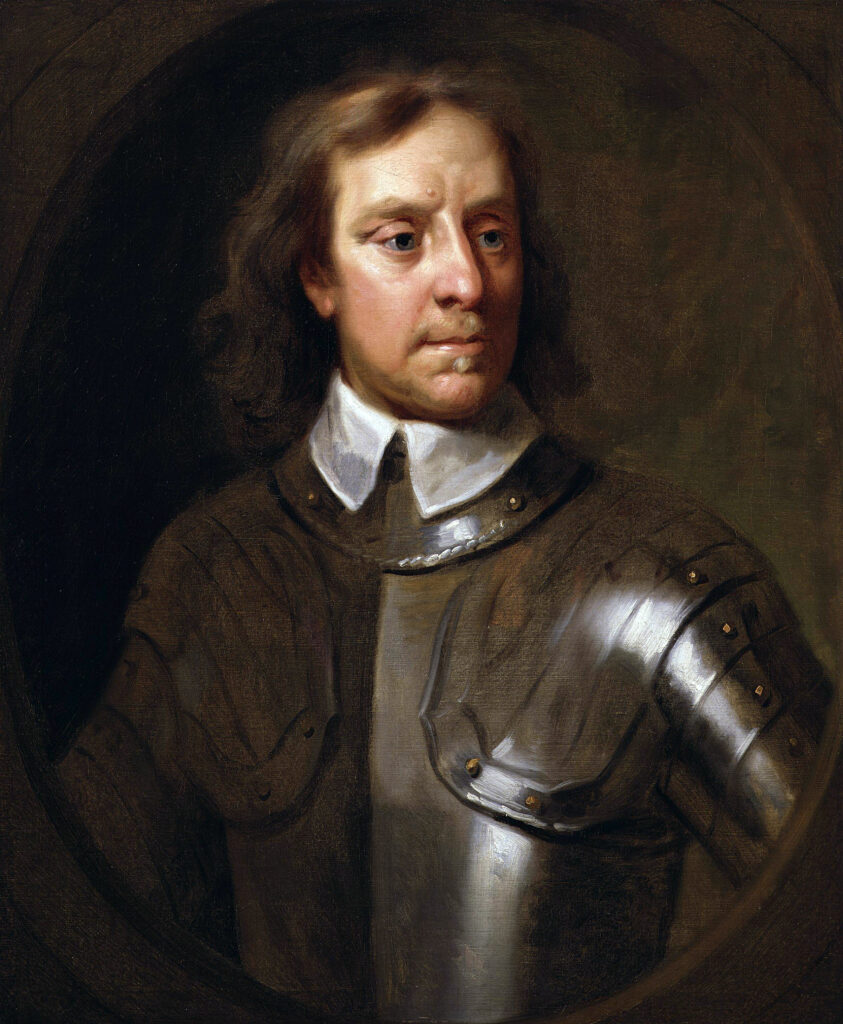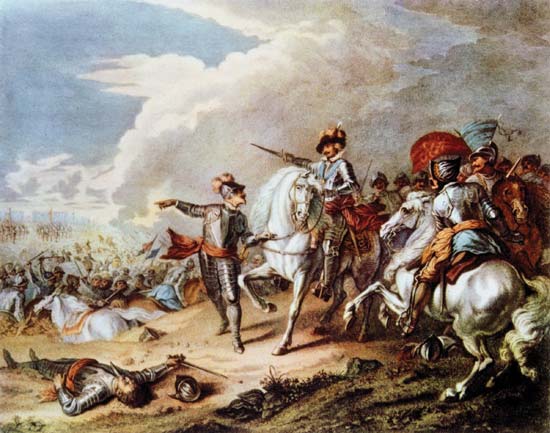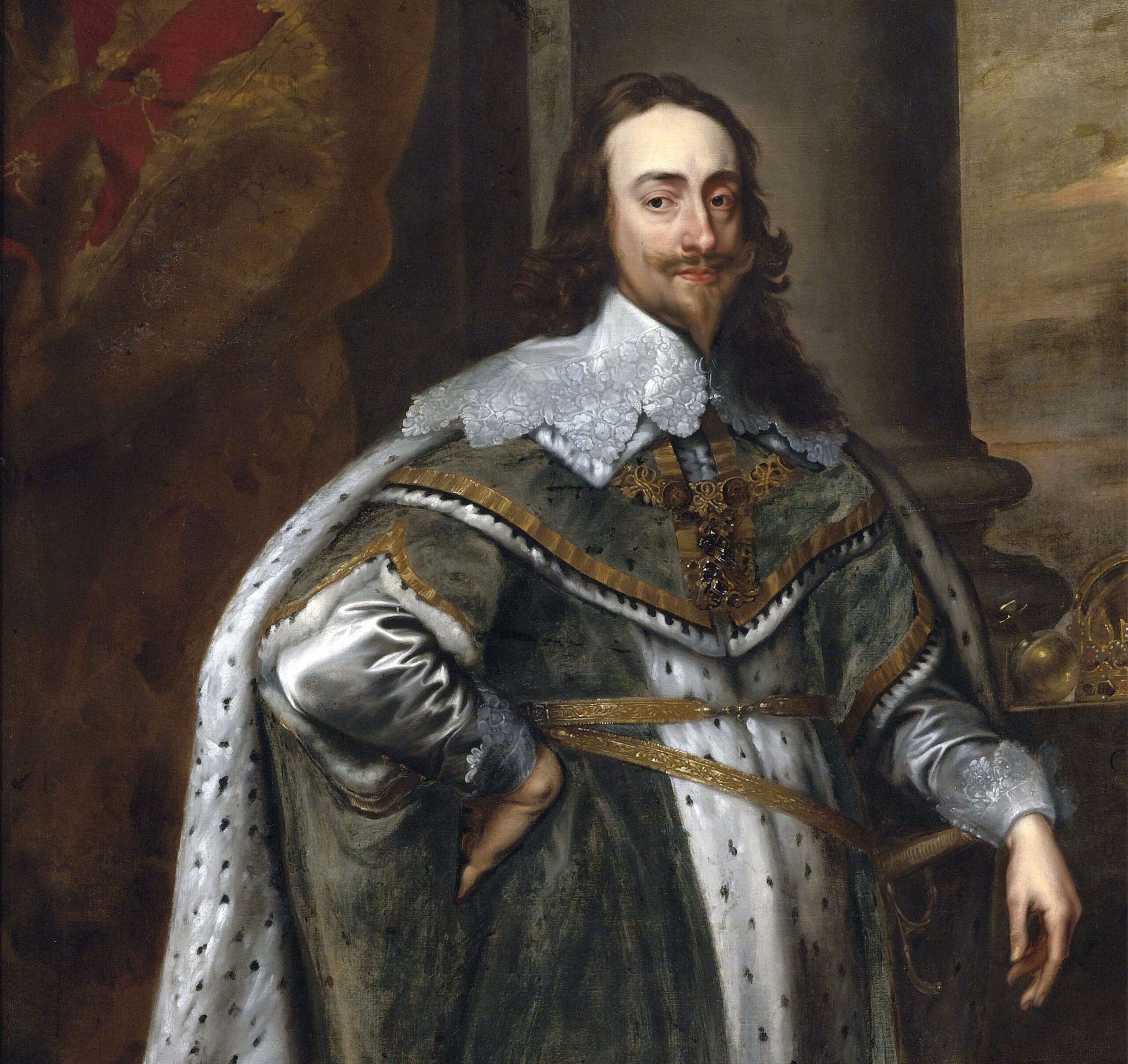The English Civil War raged between 1642 and 1651 between Charles I and the parliament of England. This not-so-romantic blog is the story of how it started, what happened and how it ended.
When people think of the English civil war they are normally just thinking about the battles for the rule of England between Charles I and his former parliament. In fact, this war was one of three intertwining wars. The struggle between Charles and parliament only accounted for the first two.
The third saw fighting between the supporters of the future King Charles II and the parliament which ruled without a monarch for a number of years after Charles I got his head chopped off. (Spoilers?)
For the purpose of this blog, and to avoid loads of confusion and this blog being the size of several books, we’re just going to look at the involvement of Charles the 1st, perhaps we’ll revisit the third part of the Civil War in a future blog- if I remember of course.
So who were the main players in the Civil War?
Charles i
On one side was the King of England, Charles the 1st.
Charles became King in 1625 and was the second King in the Stuart line after James the 1st. The Stuarts were the ones who came after the Tudors so you have a better idea of the time period we are talking about.
Right from the start Charles didn’t get on with parliament, and they didn’t get on with him. He married a French Princess, Henrietta Maria, which instantly put parliament on edge.
England was a protestant country and had been for a fair while before Charles took the throne. In marrying a French Princess, parliament were worried that Charles had plans to make England a Catholic country once more. The French were Catholics, which is where the concern came from.
Charles also believed in the divine right of Kings. This meant he firmly believed that he had been put on the throne and made King by God so didn’t need the help of parliament to make important decisions.
Not going to lie. If your answer to the question “Why should be King?” is “Because God said so.” you’ll normally be able to stay there as nobody wanted to argue with the “word of God”.
You are probably getting the idea of why the two parties didn’t get on.
In 1625 Charles refused to criticise his advisor and close friend, the Duke of Buckingham, after a failed ship battle with the Spanish. This wouldn’t have gone down well given the nature of the failure on the ocean battlefield.
In 1629 Charles got rid of Parliament altogether in what is known as “dissolving parliament”. Parliament didn’t return until 1640, 11 years later- and even that was because Charles needed a Parliament to try and push tax increases.
Again, it’s quite easy to see why Charles I and parliament didn’t get on.

Oliver Cromwell
On the other side of the war was Oliver Cromwell.
He was born on the 25th of April 1599. He was a member of parliament and the leader of the parliamentarian army during the civil war.
It was really after the beheading of Charles that Cromwell really became massively recognised for more than his military leadership.
He became Lord Protector in 1653, which meant he basically ran the country. He had been offered the title of King but he turned it down, suggesting he couldn’t become the very thing he sought to destroy… isn’t that a line from Star Wars?
Cromwell was really religious and believed that the Bible should be studied by everyone, at least once a day.
But he was also kind of a party pooper and wanted laws introduced to ban bear-bating- which honestly was an unromantic pastime anyway. Because you will google it anyway I’ll explain quickly what bear-baiting was.
You chained a bear against a wooden pole and dogs were sent into the ring to fight against it. Like I said, unromantic! And that’s putting it lightly.
But he also wanted to ban Christmas which came he did. What a boring old sausage.
Cromwell passed away in 1658 and the title of Lord Protector was passed to his son Richard.
When Charles II became King he had Cromwell’s dead body hung and beheaded- I suppose it never hurts to make sure your dad’s biggest rival is defiantly dead.

It begins
The first major battle on English soil was the Battle of Edgehill in the October of 1642. This battle took place between Banbury and Warwick. Charles was in command of an army marching towards London which was held by the Parliamentarians. Charles aimed to put a swift end to the rebellion against his rule.
The battle was short-lived with only a day of fighting but the battle did allow the parliamentarians to reinforce their defence of London as Charles altered his course to take control of Banbury and Brentford first before advancing on London.
When Charles finally approached London he found his army outnumbered 2 to 1. With winter around the corner, Charles retreated and made a base of operations in Oxford.
His chance to end things quickly had been foiled.
The battle of Selby- 1644
I’m going to indulge for a moment. I’m actually from Selby, so I couldn’t resist including it in this unromantic blog. The battle of Selby took place on the 11th of April 1644.
Throughout the first few months of 1644, the Parliamentarians had been raiding the Royalist supply lines and the governor of York, Belasyse- who was commander of the Yorkshire Royalist force had had enough. He relocated his headquarters from York to Selby so he could better guard the South approach of the Parliamentarians.
The Royalist army was backed up by the Newark cavalry. The cavalry went to battle in Bradford but lost and was severely weakened. This left the Royalist headquarters in Selby understaffed.
The Parliamentarians sensed an opportunity to capture York but they’d have to get through Selby first. Lord Fairfax travelled from Hull with an army and combined forces with his son, Thomas Fairfax who had travelled from Cheshire. The victorious defenders of Bradford travelled across to join in as well as some soldiers from the midlands.
It’s thought that the army which Lord Fairfax led into Selby on the 11th of April 1644 had 1,500 horseback and 1,800-foot soldiers. A fairly daunting size.
To break the minimal defences of Selby which the Royalists had set up, the army was split into three. And all three sections would attack at the same time.
Lord Fairfax led the attack at Ousegate, which is next to the river Ouse. You’ll find… erm… well you’ll find the…. erm… you’ll find nothing interesting on Ousegate, but if you turn at the bridge you’ll come to Selby Abbey which is cool.
The second third of the army attacked Gowthorpe Lane- or just Gowthorpe as we call it now- the main shopping high street of Selby today which leads to the Abbey.
And the third third of the army attacked Brayton Lane where you’ll find the vets today. Oh and a school.
Sir Thomas Fairfax was head of the cavalry who hung back from the battle, to begin with.
As the three-thirds of the parliamentarian army attacked they eventually forced the Royalists to abandon their hastily built defences and retreat to the centre of Selby where the foot soldiers were protected by the Royalist cavalry.
This is when Sir Thomas Fairfax came in with the Parliamentarian cavalry and the tide of the battle quickly changed. The Royalists retreated to the river where they jumped in their boats and fled to the other side of the Ouse, abandoning their leader, Belasyse who was captured and taken prisoner. Alongside him as a prisoner were roughly 1,600 Royalist fighters and a lot of weapons and ammunition.
The loss of Selby led to the eventual capture of the North by the Parliamentarians. York was captured just 11 days after Selby at the battle of Marston Moor.
the battle of Naseby- 1645
The battle of Naseby in 1645 saw a massive victory for the Parliamentarians. Charles lost 5000 men to either injury or death and had most of his equipment and weapons destroyed or stolen as the spoils of war.
Charles fled to Scotland and was in hiding for 2 years until he was handed over to parliament in exchange for £100,000 in January 1647. Charles was taken to Hampton Court where he was kept prisoner in one of its rooms.
The luxury prison didn’t hold Charles for long though as he escaped before 1647 ended. And this is where I’m slightly confused. After his escape, Charles went back to Scotland, the people who had traded him for an awful lot of money. I’m not sure running back to the people who traded me for money would be the first place I’d go, to be honest.
This decision did pay off for Charles though as he won the Scottish support as they agreed to invade England.
The invasion was ready and began in May 1648 and by August it had been crushed and Charles was in chains, this time slightly tighter ones, once again.

Off with his head
Charles tried to negotiate a settlement with parliament to allow him to return to being King but Oliver Cromwell refused it.
Many politicians were in favour of allowing Charles to remain King with reduced power. These politicians were forced out of the building and the remaining members, including Oliver Cromwell, formed what is now known as a ‘rump parliament’.
It was the rump parliament that oversaw the trial of Charles I and ruled until April 1653, but back to that in a few paragraphs.
Charles was put on trial in January 1649 and was found guilty of treason. He was sentenced to death on the 30th of January 1649.
The person who chopped off his head was kept secret. Even to this day, we don’t know who it was who took King Charles the 1st’s head off his shoulder.
England continued without a ruling monarch until 1660 when King Charles II was crowned King after a short succession of yet more fighting.
And that’s my brief summary of just the highlights of the Civil War. There’s so much more to explore during this period- so I have no doubt we’ll be back again.
